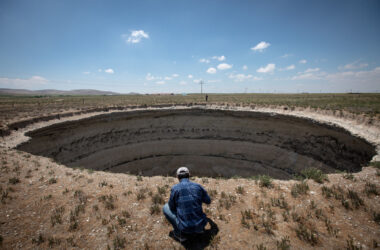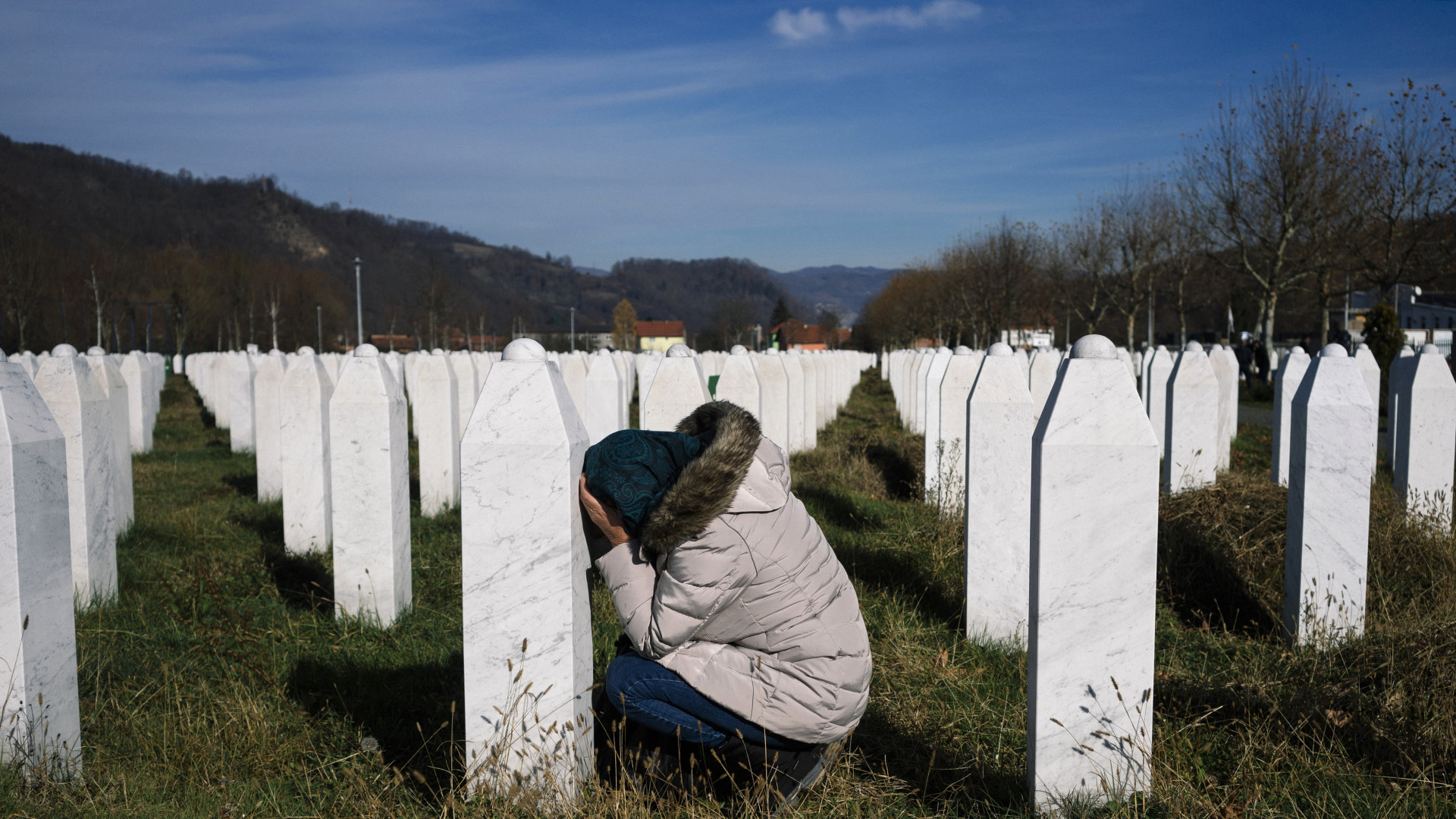Women’s People’s Party
In 1923, before the foundation of the republic, Nezihe Muhiddin and her thirteen female friends joined together to form a committee to fight for the political and social rights of women. The presence of women working at the front and behind the front under the leadership of Nezihe Muhiddin led to the expression of women’s rights views for the next generations of women, the search for rights, and the production of louder and supportive voices (Baykan & Baskett, 1999: 65). The Women’s Committee held its first official meeting on June 5, 1923, in the Conference Hall of Darülfünun, and at this meeting, it was decided to establish a women’s party. “While the founder of the Republic, the People’s Party was called the Anadolu and Rumeli Müdafaa-i Hukuk Cemiyeti, women established a political organization called the Women’s People’s Party in June 1923. The Women’s People’s Party was formed in the Women’s Council that met in Darülfünun in mid-June. The second leader of this party, which was formed under the presidency of Nezihe Muhittin, is Nimet Remide, its responsible delegate is Latife Bekir, and its general secretary is Şukufe Nihal. In addition, Matlube Omer (treasurer), Saniye (accountant) and Nesime, İbrahim, Zaliha, Tugrul and Faize ladies take part in the management.” (Toprak, 1988: 51).
When the statement published by the Women’s People’s Party is examined, it is understood that women aim to be useful to the country. They state that they want to be actively involved in both social and political life, indirectly or intellectually. Women were asked not only to have a social role but also to have their legal and political rights, to be on an equal footing with men and to be able to stand up against them both politically and legally and defend themselves when necessary. At this point, factors such as women’s starting to take an active role from being a public person, encouraging them to take part in every field from the municipality to the Assembly and is represented by the people they choose have been given great importance. (Kaçar, 2020:54). The Women’s People’s Party emphasized the importance of women’s economic independence and emphasized the need for women to be included in the working life, not only to be limited to live at home, but also to be a functioning member of the society. He also emphasized the need to have equal rights with men in cases such as divorce. In addition, he emphasized the equal education rights of girls and boys and the same accessibility to education (Şahin & Şahin, 2013:64).
The decision to establish a party was also covered in the press and had great repercussions, but the petition sent to the governor’s office received a negative response eight months later, as it was not appropriate for women to establish a party when they did not have the right to vote and be elected. Some of the women in the party found the party bylaws too excessive, and there were also articles in the by-laws that women would do their military service. Upon this situation, by making changes in the party program and softening many items, she decided to create an association called “Women’s Union” instead of the party.
Women’s Union
The Women’s Union was founded on February 7, 1924, due to the lack of approval of the Women’s People’s Party. In accordance with the statutes of the Women’s Union, she did not engage in any political activity for three years, but at the end of three years, Nezihe Muhiddin brought up the issue of political rights again. Within the scope of the second article of the Turkish Women’s Union regulation, materials such as clothes, shoes, socks and candy were delivered to five hundred orphans in one year. Financial support was provided to two hundred widows, shoes were distributed to two hundred young girls, fifteen orphans were placed in some institutions, jobs were found for twenty women, the widows and poor women were paid by employing them, the statistical distribution of orphans or poor children in Istanbul was deduced, one seam house was established and an exhibition was opened in 1925 (Muhiddin, 1927: 3). In addition, branches of this union were opened in many cities of Anatolia and provided many aids to both women and children. In the clinic he opened, there are activities such as the supply of free medicine to sick children, their care at home by nurses in case of need, and the feeding of baby food every week to babies in need. In addition, the union has taken many steps in cooperation with the police to combat prostitution. Between 1925 and 1927, a magazine called Women’s Way was published for the Women’s Union to be present in the press.
The association, which decided to dissolve itself in 1935 with the thought that they had achieved their goals, then decided to re-establish on April 13, 1949, considering that the protection of women’s rights was as important as gaining them, and in 1954 it was brought to the status of association for public benefit.
A Journey to Acquire Women’s Political Rights
The issue of granting political rights to women was first brought up in the Turkish Grand National Assembly in 1923 when the law on parliamentary elections was being discussed. While some MPs argued that women are also citizens and therefore should have the right to vote and be elected, which is a citizenship right, the majority was of the opposite opinion. Therefore, this proposal was rejected, and women could not participate in the 1923, 1927 and 1931 elections.
On March 3, 1924, thanks to the Law of Unification of Education, both boys and girls had the right to equal education with a modern, secular and mixed education system.
On October 4, 1926, polygamous marriages were ended with the Turkish Civil Code and women gained new rights.


In 1930, women had the right to participate in municipal elections.
By amending the 20th and 25th articles of the Village Law in 1933, they gained the right to elect and be elected to the village headman and the council of elders.
Amendments were made to the 10th and 11th articles of the 1924 Constitution, and on 5 December 1934, women were given the right to vote and be elected in the general elections.
Turkish women were able to vote for the first time in 1935, and at the end of the election, eighteen women deputies gained the right to enter the parliament.
Turkey signed the United Nations Convention on the Elimination of All Forms of Discrimination Against Women (CEDAW) in 1985, and it entered into force on 19 January 1986. They must submit to the Committee on the Elimination of All Forms of Discrimination Against Women (CEDAW). Within the scope of this obligation, Turkey presented and defended its reports to the CEDAW Committee in 1990, 1997, 2005 and finally in 2008. In our country, which ratified the Convention on the Elimination of All Forms of Discrimination Against Women, the General Directorate on the Status of Women (KSGM) was established in 1990 as a national mechanism to develop women’s policies. and entered into force on 29 January 2003. With the Optional Protocol signed, individuals and groups are granted the right to apply to the CEDAW Committee in case the parties violate the CEDAW Convention. The Protocol also gives the Committee the authority to accept and examine the complaints to be made to supervise the implementations. (Gökçimen,2008:32-35).
Legal Developments Supporting Female-Men Equality
Article 10 of the Constitution states, “Women and men have equal rights. The state is obliged to ensure that this equality is realized.” principle was added and another step was taken regarding gender equality. In addition, after the statement “Family is the foundation of Turkish society” in article 41 of the constitution, “and it is based on equality between spouses.” The place of women in social life was strengthened by adding the sentence.
On January 1, 2002, some changes were made in the Turkish Civil Code, bringing one step closer to equality between men and women and making women’s place clear in social, economic and political life. Some of the changes made are:
The provision “The husband is the head of the family” was changed and the provision “The spouses manage the marriage union together” was introduced.
While in the old Law, the right to represent the marriage union belonged to the husband, except in some cases, the representation of the marriage union in the new Turkish Civil Code was given to both spouses.
The new Civil Code stipulates that one of the spouses does not have to get the permission of the other in choosing a profession and job. With this arrangement, spouses will be able to continue their profession without the permission of the other spouse.
The new law did not include the old provision that gives priority to boys over girls in the division of inheritance, in terms of which heir will be allocated to agricultural immovables, which are among the estate properties and whose economic integrity should not be impaired.
According to the old Civil Code, if one of the other regimes was not chosen, the legal property regime was “separation of property”, while the “regime of participation in acquired property” was introduced in the new Law. Instead of the property separation regime, which is based on the principle that each spouse has the goods registered in his name, according to the new property regime, after the establishment of the marriage union, the assets obtained by each spouse by giving in return (acquired goods) are shared equally by the spouses upon the end of the marriage. Personal property and inherited property are not shared.
According to the old Civil Code, the livelihood of the house and children belonged to the husband, but in the new Civil Code, “Spouses participate in the expenses of the union with their labor and assets in proportion to their power.” arrangement has been made.
Representation In Grand National Assembly Of Turkey
In the Republic of Turkey, women could not participate in the elections for the first four terms. From the fifth term, the ratio of female MPs to total MPs is as follows: 4.5%, 3.7%, 3.5%, 2%, 0.6%, 0.7%, 1.3%, 0.7%, 1.8%, 1.1%, 1.3%, 0.9%, 3%. 1.3%, 1.8%, 2.4%, 4%, 4.4%, 9.1%. The average participation rate of women in parliament in Turkey is 2.5%. The low rates are an indication that women are not sufficiently involved in politics in Turkey. As it can be understood from these figures, although women are given the political rights given to men, women and men cannot have the same opportunities due to social, cultural, and economic reasons. This is proof that democracy is not implemented as it should be.
Conclusion
Women who have been fighting for democracy and equality from the very beginning have finally started to get out of their homes and the social roles imposed on them and make their voices heard. But this is only the beginning because the desired progress has not been made yet. From 1935 to 2009, 236 female deputies were able to enter the parliament, against 9174 male deputies. In other words, only 2.6% of the parliament was composed of women throughout the history of the Republic (Sancar & Üşür, 2008:217-220). This is important proof that women cannot use their political rights effectively. But we should know that there is a mutual problem here. Many obstacles to women in this regard cause them to stay away from politics. Therefore, changing social values is an issue that needs to be brought to the agenda. Thanks to these political rights fought for, an effective and democratic society can be created. In order to ensure real equality and democracy, both women and men need to be able to exist and have their voices heard in both social, economic and political life.
Prepared by Zeynep Akyüz for The FEAS Journal.
REFERENCES
Baykan, A.& Baskett, B. (1999) Nezihe Muhittin ve Türk kadını 1931, s.65.
Gökçimen, S. (2008) Ülkemizde Kadınların Siyasal Hayata Katılım Mücadelesi, s.32-35
Kaçar, A. (2020) Kadınlar Halk Fırkasından Türk Kadınlar Birliğine Kadın Hareketi ve Basına Yansıması (1923-1935), s.54.
Muhiddin, N. (1927) “Muvaffak Olduğumuz İşler”, Türk Kadın Yolu, No: 29, s.3.
Sancar-Üşür, S. (2008) Siyasal Yaşam ve Kadınlara Destek Politikaları. Ankara: T.C.Başbakanlık Kadının Statüsü ve Sorunları Genel Müdürlüğü, s. 217-220.
Şahin, M.& Şahin, C. (2013) Osmanlı Son Dönemi ile Milli Mücadele Yıllarında Türk Kadınının Sosyal, Siyasî ve Askerî Faaliyetleri, s. 64.
Toprak, Z. (1988) Tarih ve Toplum Dergisi












